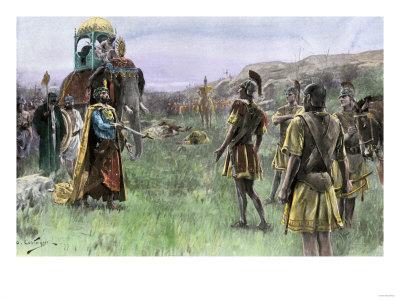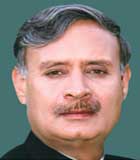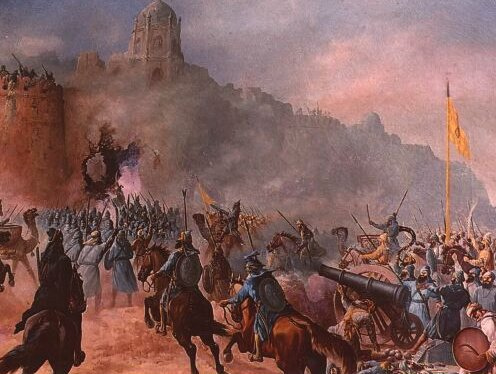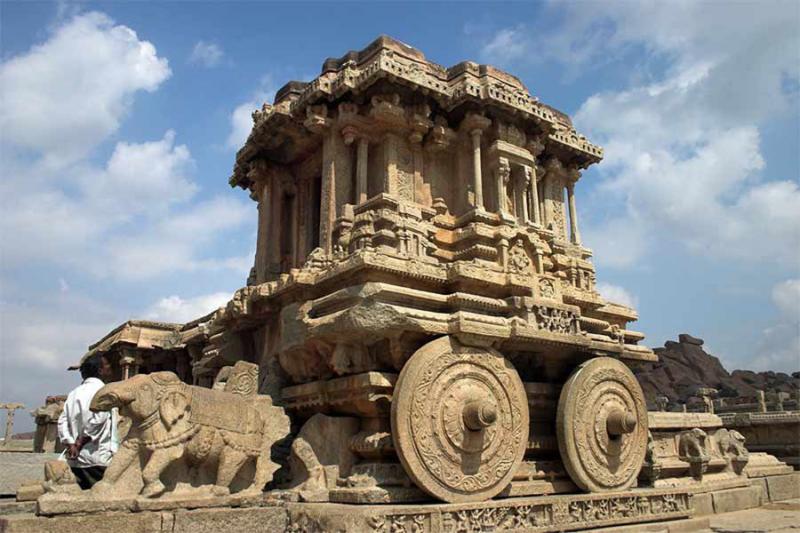Champapura in Bhagalpur was founded by Sahasra Arjuna, of the tribe. This was Mahishmati on the Nerbudda, still existing in Maheswar. The rivalry between the Lunar race and that of the Suryas of Ayodhya, in whose aid the priesthood armed, and expelled Sahasra Arjuna from Mahishmati, has been mentioned. A small branch of these ancient Haihayas yet exist in the line of the Nerbudda, near the very top of the valley at Sohagpur, in Baghelkhand, aware of their ancient lineage; and, though few in number, are still celebrated for their valour.
DwarkaKusasthali Dwarka, the capital of Krishna, was founded prior to Prayag, to Surpur, or Mathura. The Bhagavat purana attributes the foundation of the city to Anrita, the brother of Ikshwaku, of the Solar race, but states not how or when the Yadus became possessed thereof.
The ancient annals of the Jaisalmer family of the Yadu or Jadon stock give the priority of foundation to Prayag Mathura , and last to . All these cities are too well known to require description; especially Prayag, at the confluence of the Yamuna and Ganges. The Prasioi were the descendants of Puru's of Prayag, visited by Megasthenes, ambassador of Seleucus, and the principal city of the Yadus, ere it sent forth the four branches from Satwata. At Prayag resided the celebrated Bharat, the son of Sakuntala.
Surpur We are assured by Alexander's historians that the country and people round Mathura, when he invaded India, were termed Surasenoi. There are two princes of the name of Sursen in the immediate ancestry of Krishna ; one his grandfather, the other eight generations anterior Which of these founded the capital Surpur,1 whence the country and inhabitants had their appellation, we cannot say Mathura and Cleisobara are mentioned by the historians of Alexander as the chief cities of the Surasenoi. Though the Greeks sadly disfigure names, we cannot trace any affinity between Cleisobara and Surpur.
Hastinapur The city of Hastinapur was built by Hastin a name celebrated in the Lunar dynasties. The name of this city is still preserved on the Ganges, about forty miles south of Hardwar where the Ganges breaks through the Shiwalik mountains and enters the plains of India. This mighty stream, rolling its masses of waters from the glaciers of the Himalaya, and joined by many auxiliary streams, frequently carries destruction before it. In one night a column of thirty feet in perpendicular height has been known to bear away all within its sweep, and to such an occurrence the capital of Hastin is said to have owed its ruin.
Panchala From Ajamidha in the fourth generation, was Bajaswa, who obtained possessions towards the Indus, and whose five sons gave their name, Panchala, to the Panjab, or space watered by the five rivers. The capital founded by the younger brother, Kampila, was named Kampilnagara.*The descendants of Ajamidha by his second wife, Kesini, founded another kingdom and dynasty, celebrated in the heroic history of Northern India. This is the Kausika dynasty.
Kannauj Kusha had four sons, two of whom, Kushanabha and Kushambha, are well known to traditional history, and by the still surviving cities founded by them. Kushanabha founded the city of Mahodaya on the Ganges, afterwards changed to Kanyakubja, or Kanauj, which maintained its celebrity until the Muhammadan invasion of Shihabu-d-din (a.d. 1193), when this overgrown city was laid prostrate for ever. It was not unfrequently called Gadhipura, or the ' city of Gadhi.' Kusamba also founded a city, called after his own name - Kausambi. The other sons built two capitals, Dharmaranya and Vasumati.













